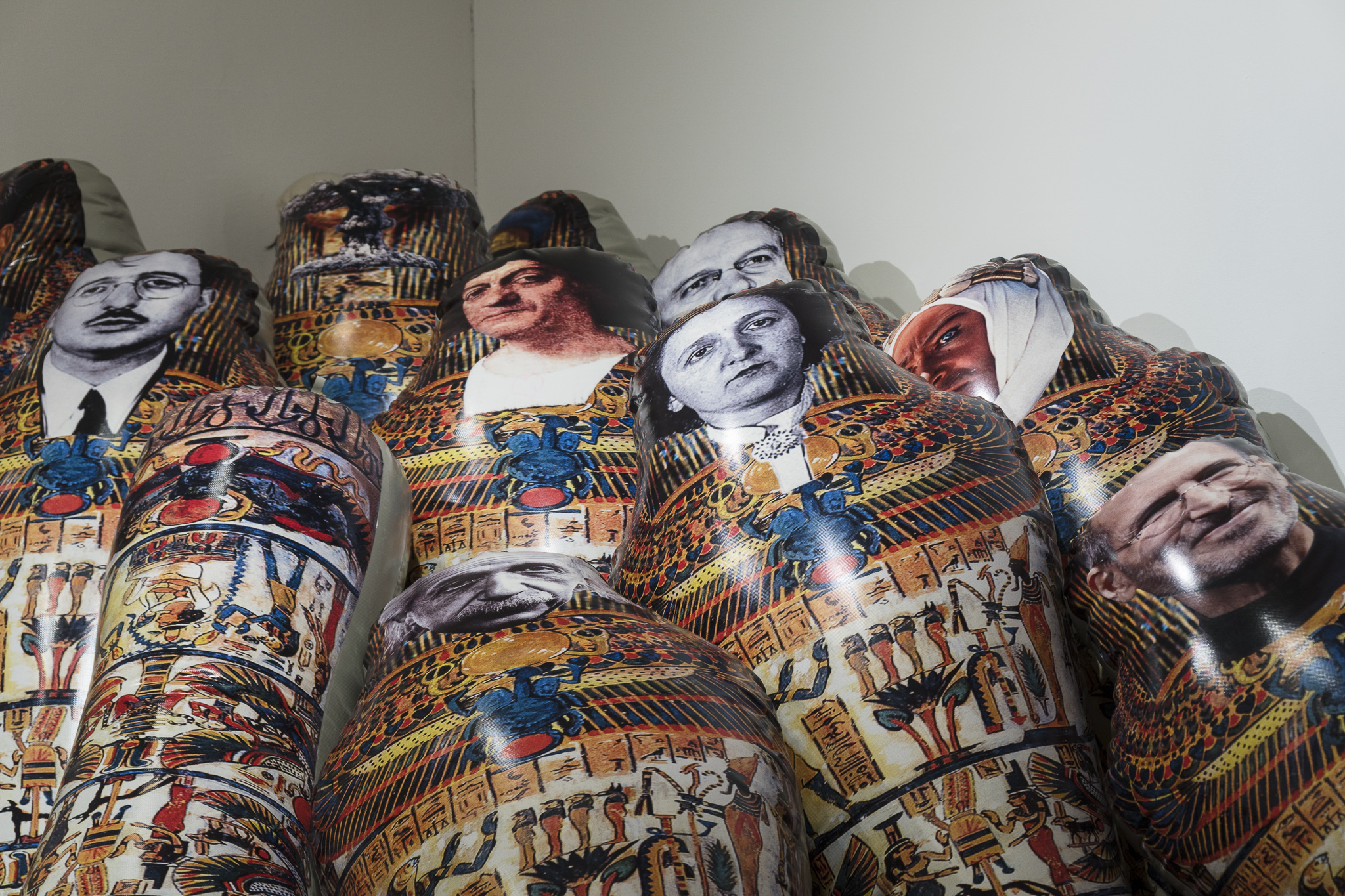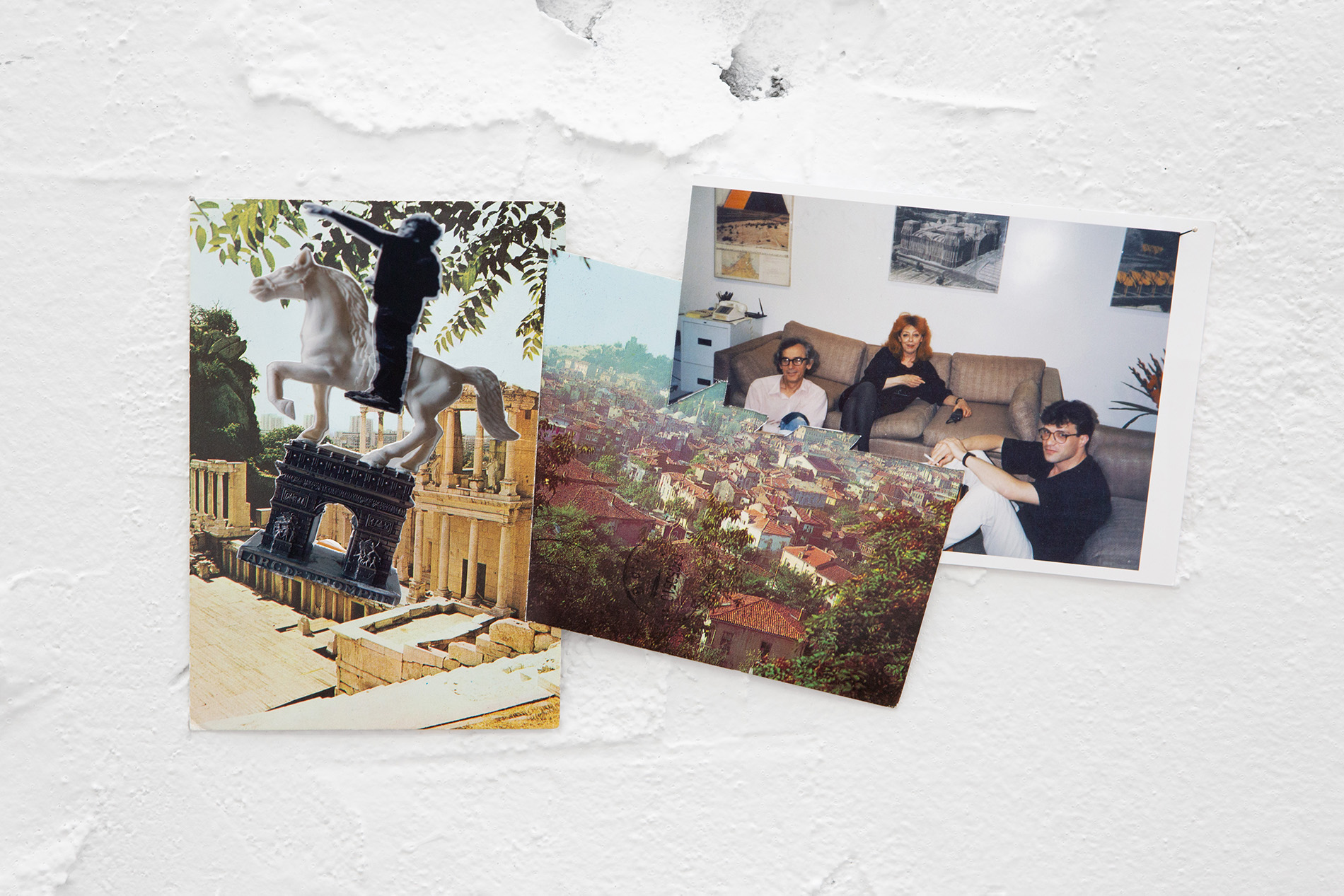Luchezar Boyadjiev
Installation
-
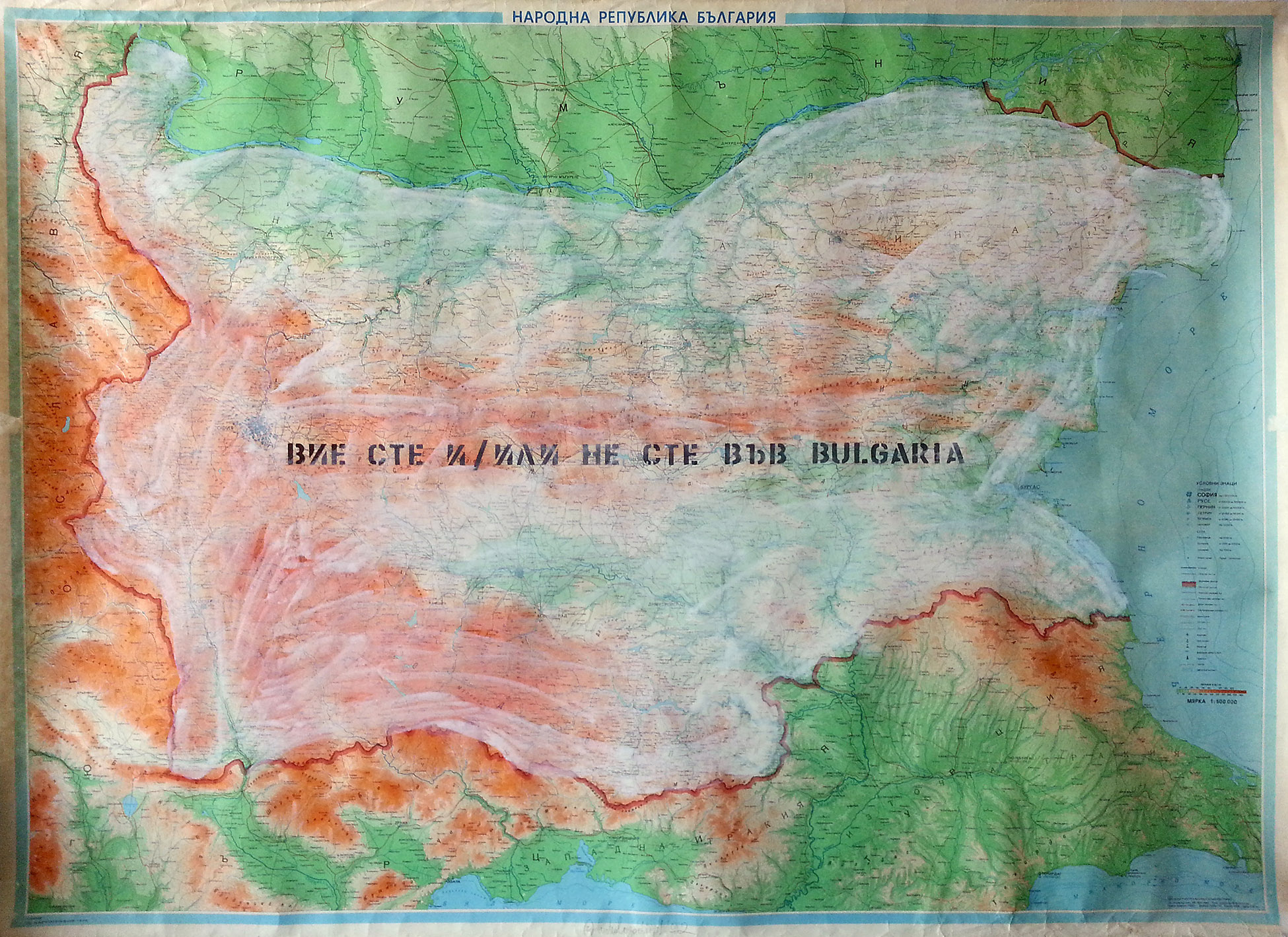 TOEFL, 1981- 1986/1991-1992
installation
TOEFL, 1981- 1986/1991-1992
installation
drawings, objects,
texts, photographs,
collages, etc. made at various times from the life of the artist ranging from 1981-1983 and 1986 (while living in New York), to 1991-1992 and the beginning of his career in Sofia
dimensions variable Installation view: “Medical Check-up”, Club of the (eternally) Young Artist; 6 Shipka St. Gallery, Sofia. February 1992 The early 1990s saw the influx of a lot of new and fancy things in the life and public space of ex-Socialist Bulgaria. Top among these were English language and visual pornography. The new notion of “freedom” was taken literally and extremely liberally to mean “anything goes”. You were now “IN” and/or “OUT” of Bulgaria at the same time; you were “IN” and/or “OUT” of Bulgarian language, visual culture, and collapsing notions of public code of conduct, etc. You were also “IN” and/or “OUT” of the whole world. Or so it seemed at the time.
The “TOEFL” installation plays with the notion of a simulated “test” for the visual and language literacy of new audiences as to the use of these “new-comers”. The title refers to TOEFL – Test of English as a Foreign Language, which each individual hoping to study or work in the USA must take convincingly enough.
In view of my own life/work background with regard to the English language and visual culture of the USA – which were the top source for imitation in Bulgaria at the time after the fall of the Berlin Wall, I incorporated bits and pieces in this installation that I had made as far back as 1981-83 and 1986 (such as for instance, the 2 horrible self-portraits from my first months in New York City back in the spring of 1981). The installation refers to the adoption of visual matrix from adult magazines and their specific gender constructs, and also to language constructs that are hard to translate from Bulgarian into English and vice versa especially some famous modern art dictums that have high currency ratings in the West but were of little use in the ex-Soviet bloc. Work can be viewed in details here -
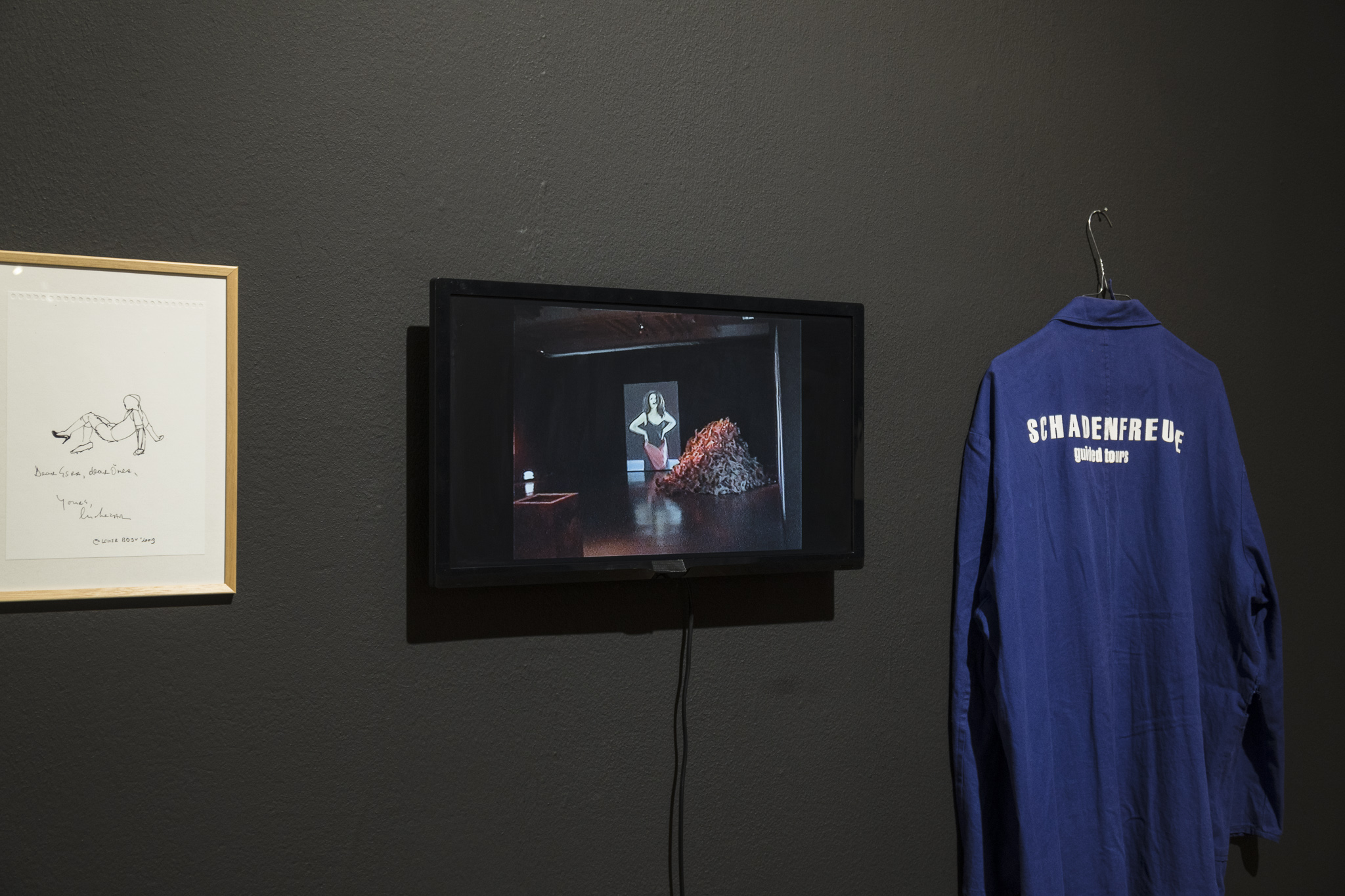 Schadenfreude Guided Tours, 2003
installation
Schadenfreude Guided Tours, 2003
installation
50 drawings ink on paper,
1 worker’s coat with a logo,
an artist’s book - the modified exhibition catalogue,
and video film – a tour around the show made in situ
Collection René Block-Berlin After being preoccupied for years with the question of who goes to see and who pays for the shows he is part of, the artist finally got a chance to spend 7 weeks out of the 13 weeks run of the show of contemporary art from the Balkans titled “In the Gorges of the Balkans” and curated by René Block in the Friedericianum in Kassel, 2003. Doing for hours each day his Schadenfreude Guided Tours – performative lectures about the art works in the show made in the space of the exhibition, the artist was animating and uniting the works and the space for the audience. The resulting works – a video tape documenting a tour; the artist’s book – the catalogue annotated and covered with drawn and collaged comments; the coat used as a uniform; and the 50 drawings – letters to the other artists, are a special kind of testimony where the memory of a single yet huge show is preserved and kept by/with the work of one of its participants. View the work in details here -
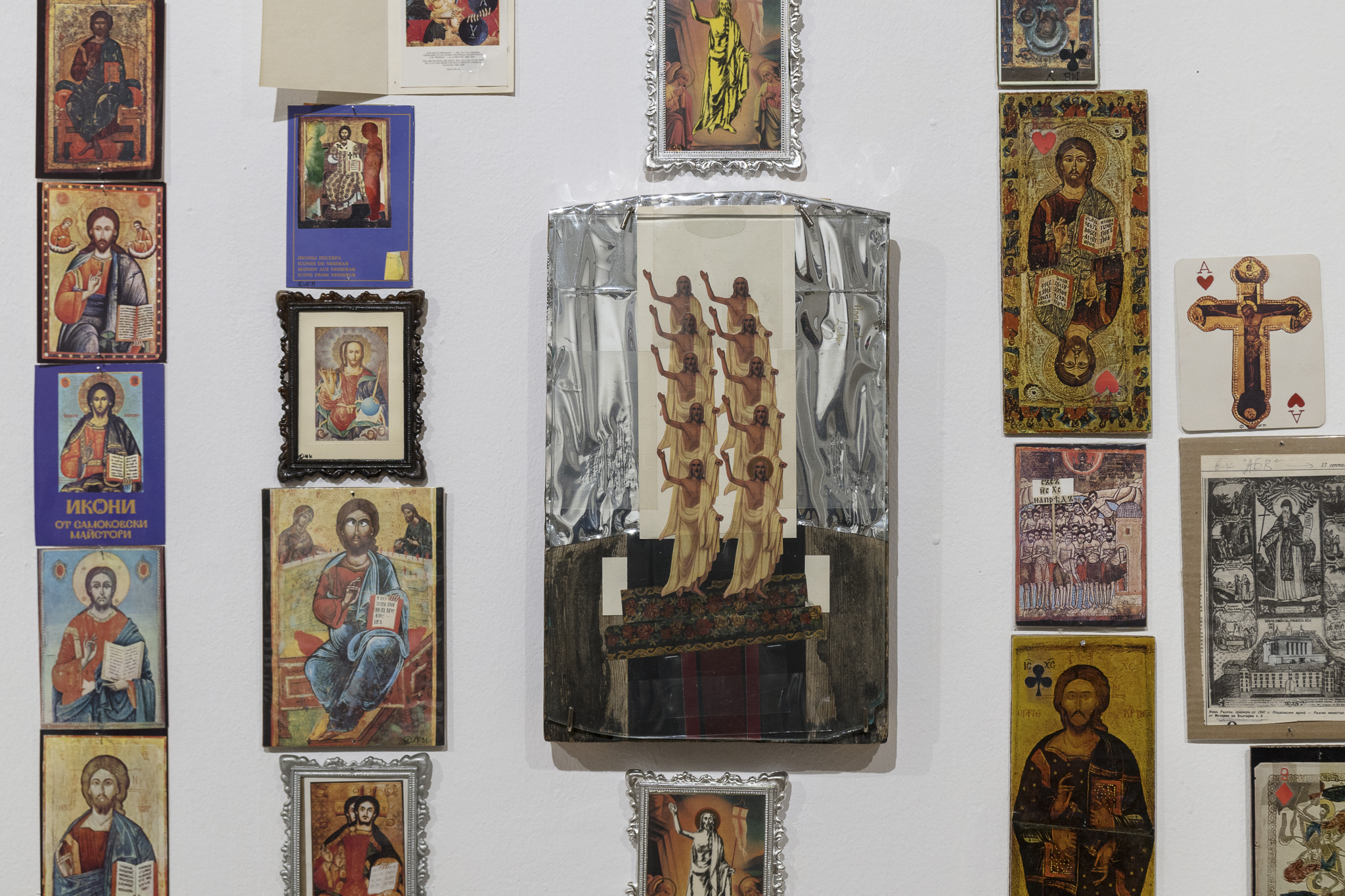 Fortification of Faith, 1989-1991
installation
Fortification of Faith, 1989-1991
installation
145 collages and small objects
app. 510 х 220 х 50 cm Collection Hohenthal und Bergen-Berlin Following the gospel narrative the work explores a hypothesis – there were 2 twin brothers in Judea at the time of the Crucifixion, Resurrection and so on… The Twins – provisionally called Jesus H Christ and Jesus N Christ, were never ever seen/shown together at the same time and place… One was crucified, died, and buried while the other one went on as if resurrected… Conceived as an idea in February 1989, and developed in the course of two years and first shown in Sofia in February 1991 the work “bridges” over the time before and after the fall of the Berlin Wall in November 1989 and the collapse of the Soviet Block. While using the universally recognizable imagery of the icons and a highly controversial idea of simulation and conspiracy and reversal of censorship, the work engages with the collapse of society, the vacuum of values and the chaotic reality of the early 1990s in Bulgaria and Eastern Europe. This was the time of, in the words of the artist, “religion without faith” when one kind of dogma – communism, was fast replaced by another one – free market economy and parliamentary democracy introduced from the outside while following a utopian-kind of blueprint for the future that never actually came. View the work in details here -
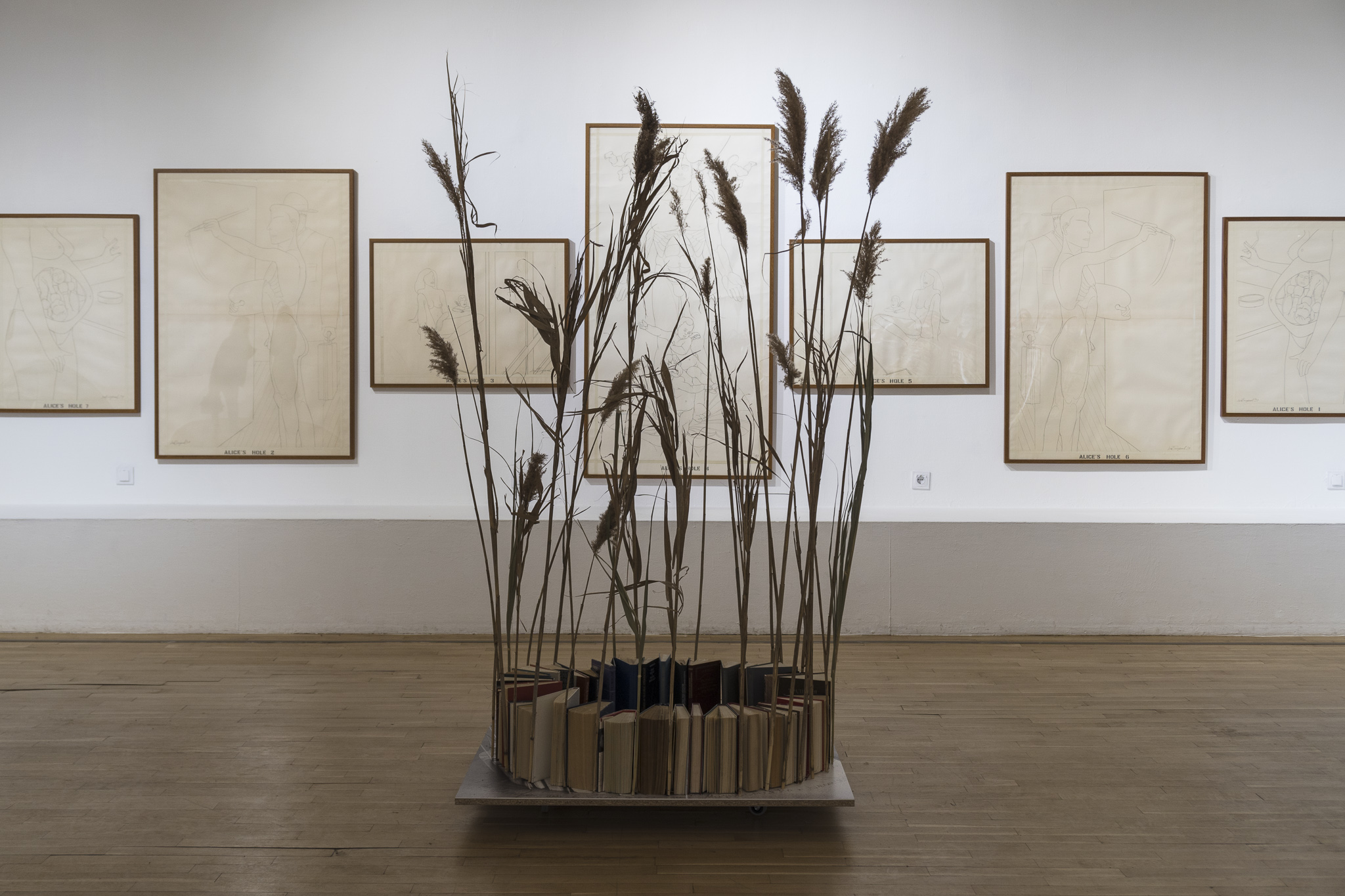 Alice’s Hole or the swamp of Marx-Leninist Aesthetics, 1991
Installation
Alice’s Hole or the swamp of Marx-Leninist Aesthetics, 1991
Installation
7 drawings, pencil on paper, various sizes (1 drawing 173 x 90 cm, 2 drawings 141 x 95 cm, 2 drawings 70.5 x 95 cm, and 2 drawings 95 x 70,5 cm),
textbooks on Marxist-Leninist aesthetics used by the author during his education at the National Art Academy in Sofia 1975-1980,
reed, photograph, textual drawing, etc. The work tells the “story” of the birth-and-life of a socialist-realist artist from before 1989 in mirrored images – born like Venus in the Botticelli painting with putty-angels overseeing the event, the artist is penis-less, his wife is… lonely, he is monitored by officials and when finally he conceives of something – it’s of twin babies fighting with boxing gloves while still in their mother’s womb. Work can be viewed in details here -
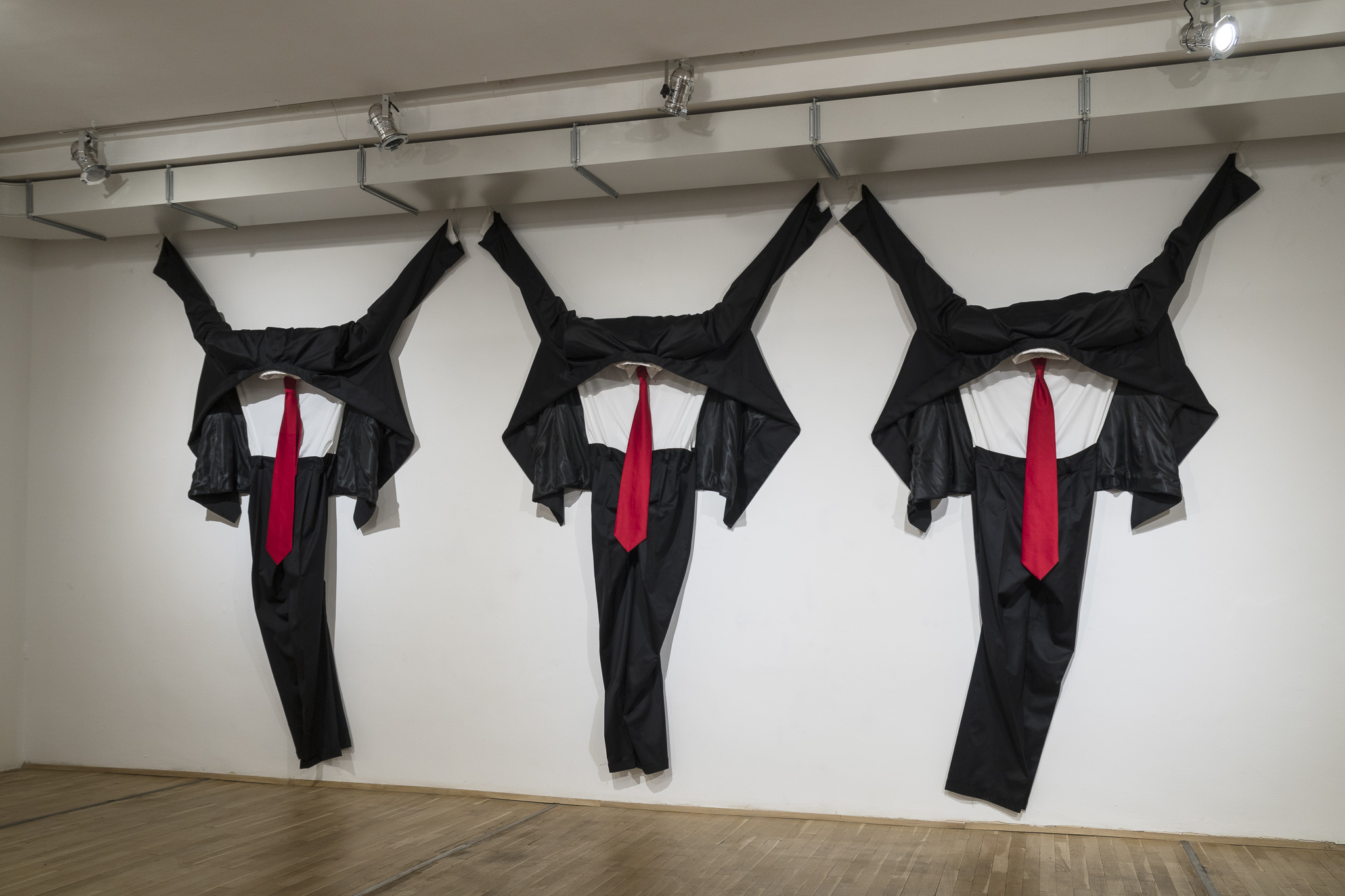 Post(neo)-Golgotha, 2018
author’s replica after a work from 1994 in 2/3 size of the first version
Post(neo)-Golgotha, 2018
author’s replica after a work from 1994 in 2/3 size of the first version
installation
fabric, soft sculpture
app. 350 x 600 x 40 cm The work engages with the replacement of one dogma with another in the post-1989 world – the dogma of blind faith in communism with that of blind faith in business, free market economy and so on. Nowadays it is seen as a critique on neo-liberalism while the new color of the neck ties and the position of the costumes-without-bodies is often linked to the situation in the US, the supposed leader of the free world.
Object
Mixed Media
-
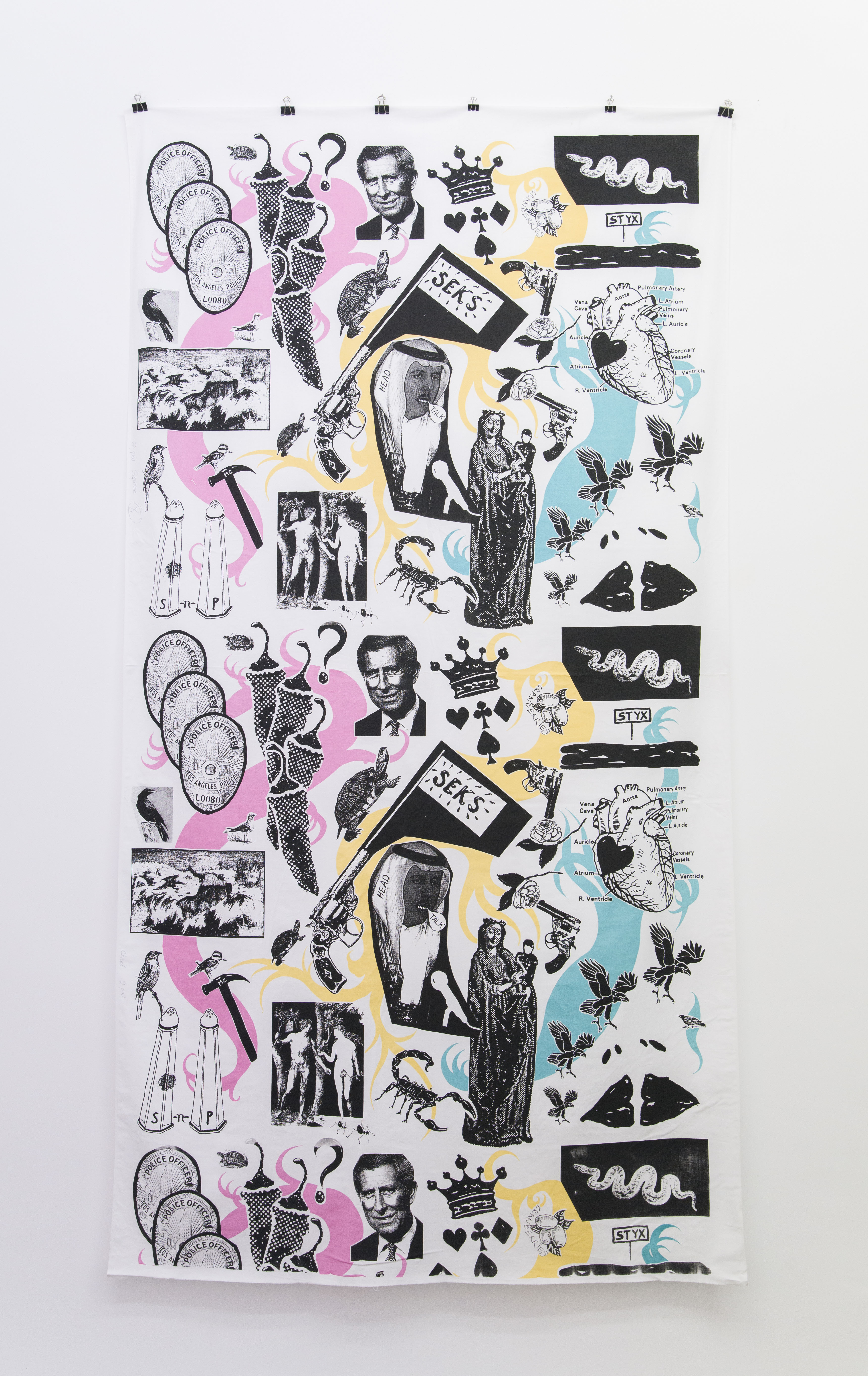 Music to the Eyes (Favorite Rock Acts), 1997
4 colors
Music to the Eyes (Favorite Rock Acts), 1997
4 colors
silk-screen, print on fabric
263.5 x 139 cm -
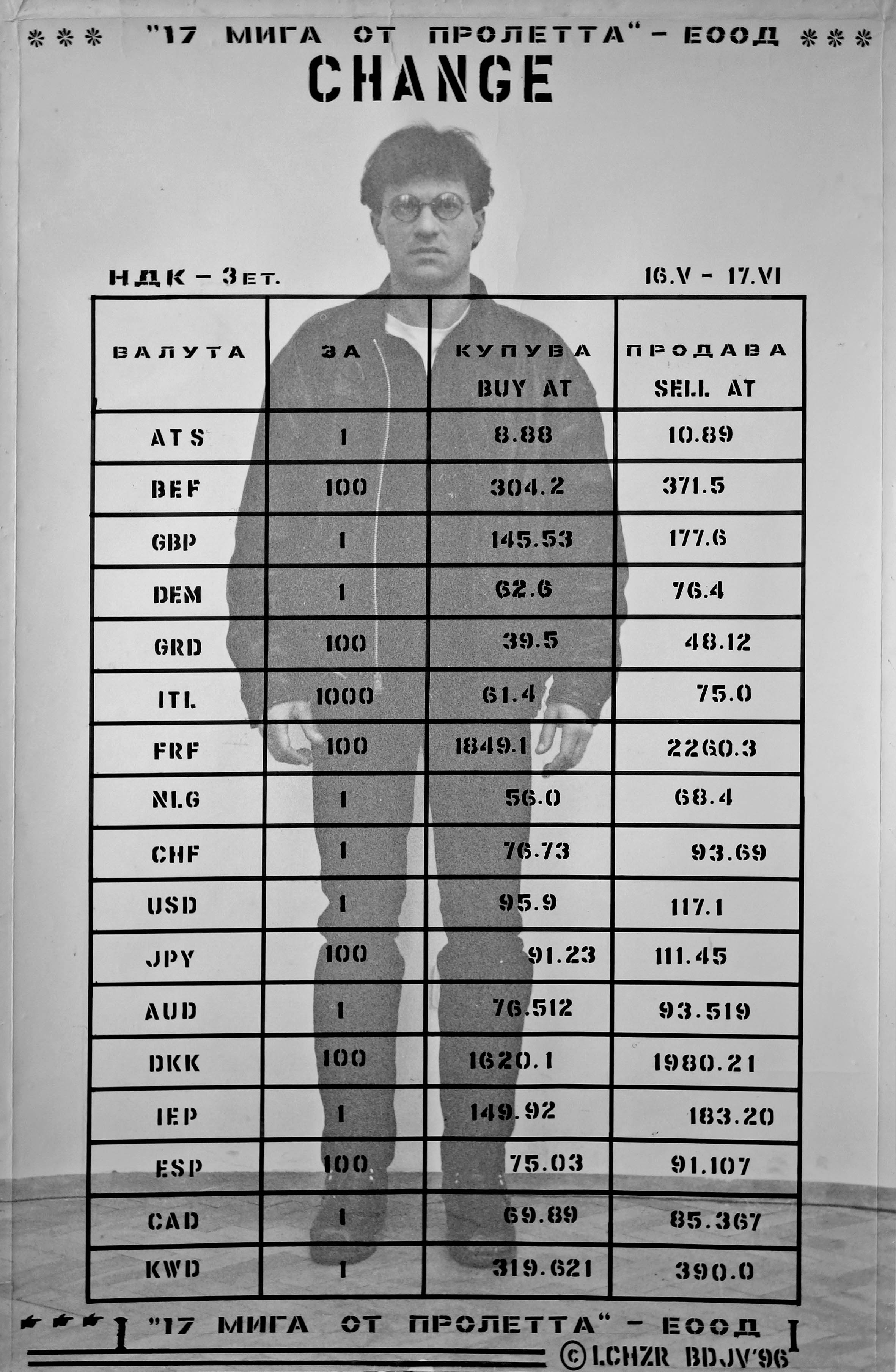 Change (Self-portrait with 17 currency exchange rates), 1996
photograph
Change (Self-portrait with 17 currency exchange rates), 1996
photograph
felt-tip marker on photo paper
framed
160 x 108 cm
edition 5+2AP Initially part of “17 Instants from Spring, LTD” – a project for a fictional currency exchange bureau and insurance company, 1996 -
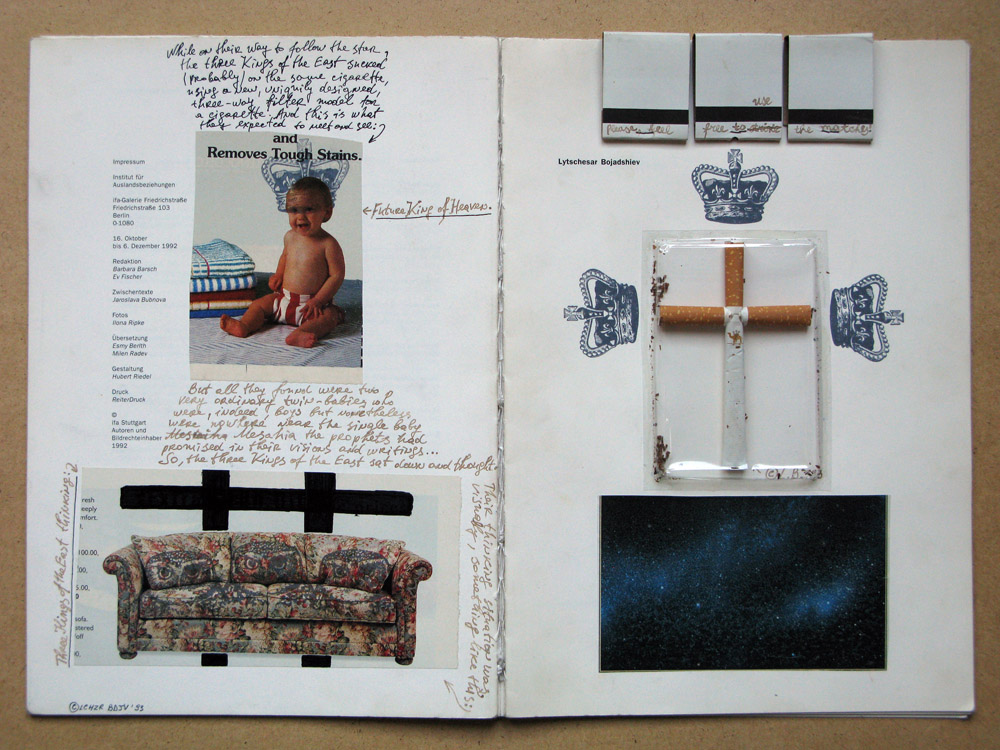 Modified Catalogue, 1993
Part of a cycle of 55 hand-manipulated catalogues from a solo show
Modified Catalogue, 1993
Part of a cycle of 55 hand-manipulated catalogues from a solo show
30 x 42 cm In the fall of 1992, the organizers of the first solo show of the artist outside of Bulgaria, the IFA-Berlin Galerie published a dual edition of the exhibition catalogue. By mistake, there appeared an extra 200 or so copies of the catalogue – with full content but without covers. The artist took some of these and “customized” them by giving each one a unique cover thus turning the faulty catalogue edition into a cycle of artist’s books. Work can be viewed in details here -
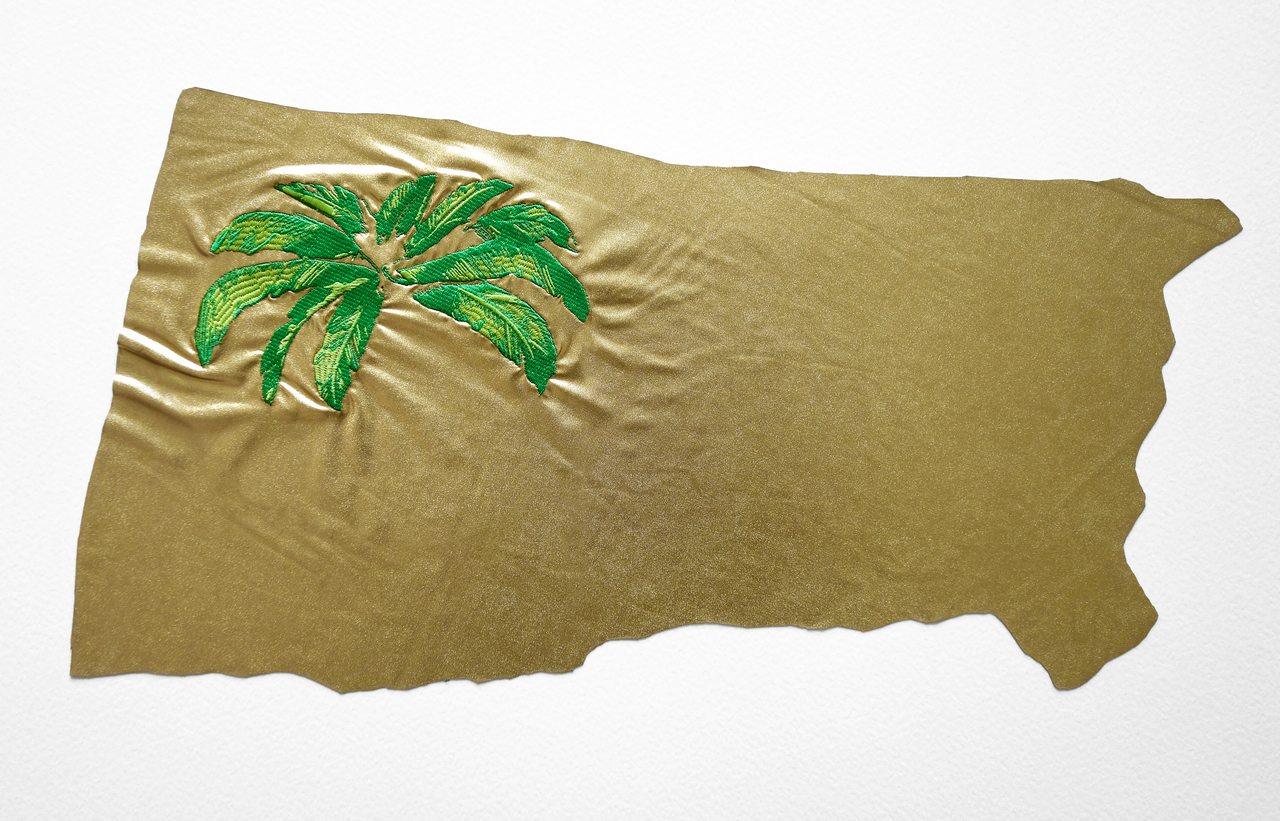 New-found flag for a missing country, 2018
object
New-found flag for a missing country, 2018
object
fabric, embroidery
31 x 58 cm
еdition 5+2AP
Drawing
-
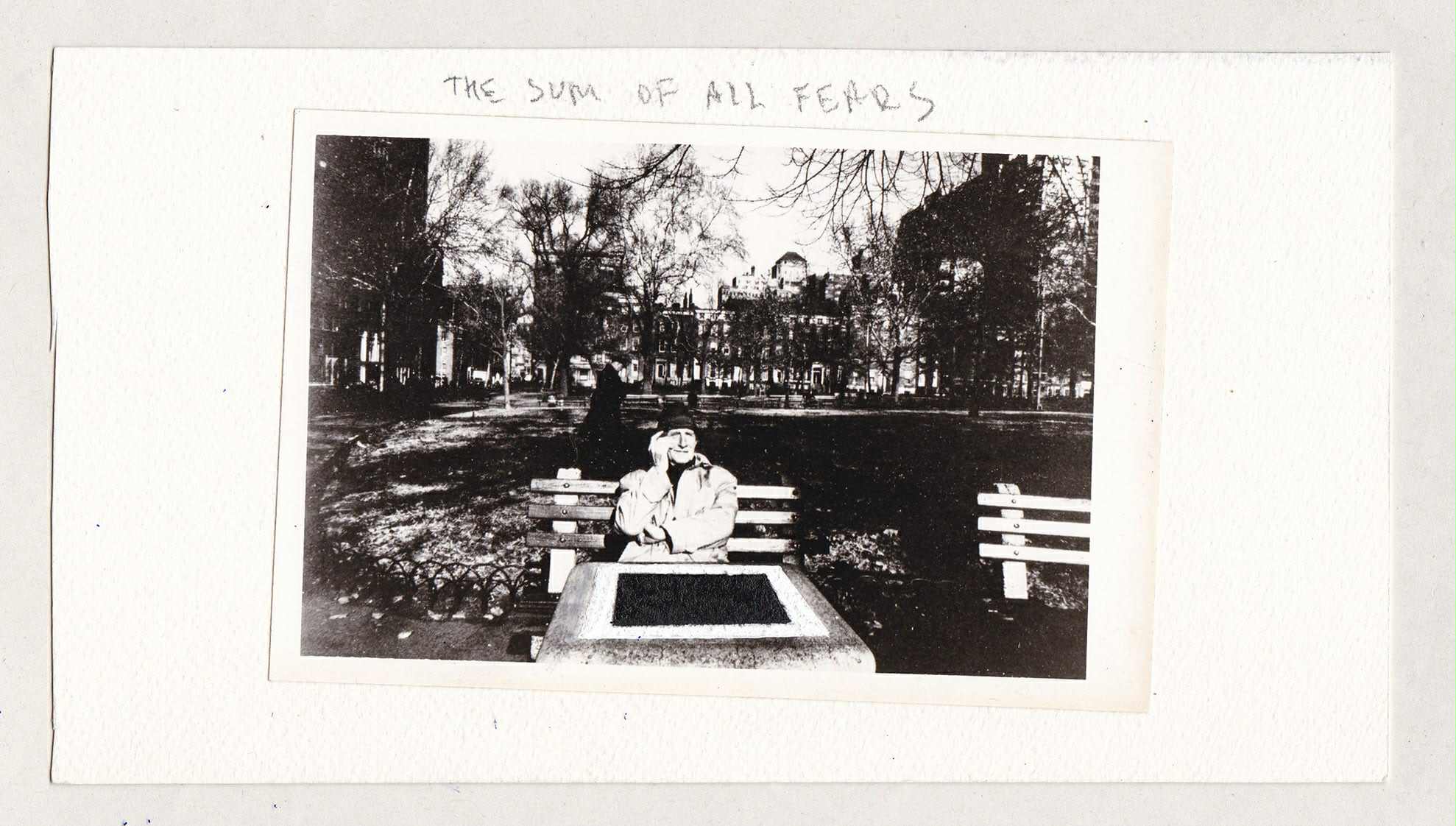 The Sum of All Fears, 2012
drawing on photography, pasted on watercolor paper
The Sum of All Fears, 2012
drawing on photography, pasted on watercolor paper
part of a cycle of 7 works
12,5 x 23 cm -
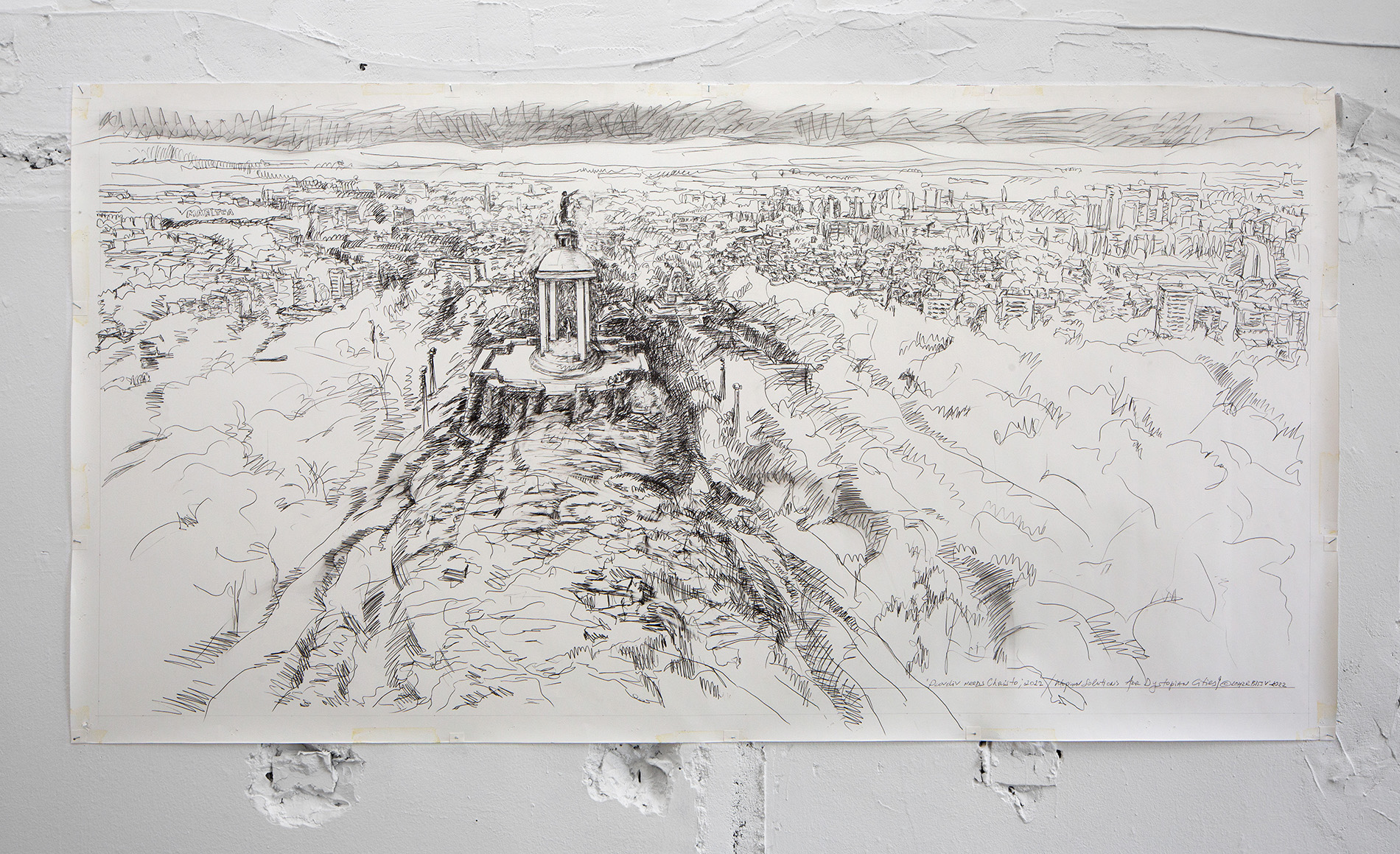 Plovdiv needs Christo, 2022
Utopian solutions for Dystopian Cities
Plovdiv needs Christo, 2022
Utopian solutions for Dystopian Cities
pencil on paper
110 x 211 cm
unframed -
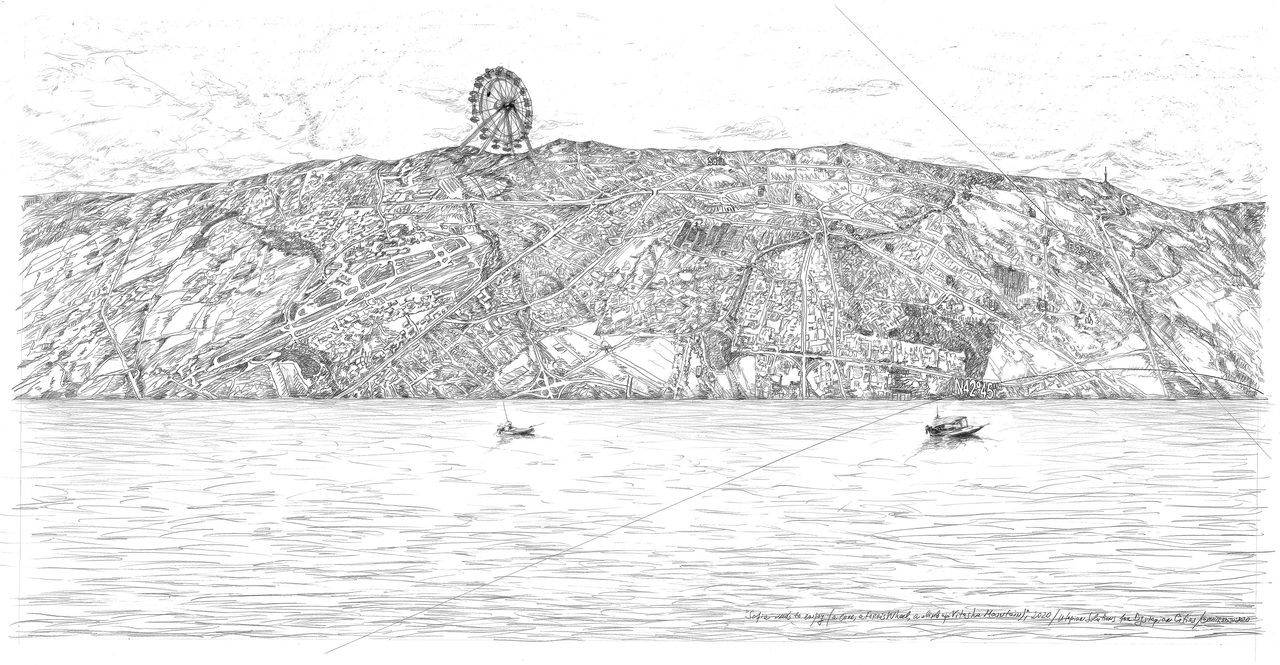 "Sofia needs to enjoy (a lake, a Ferris Wheel, a climb up Vitosha Mountain)", 2020
drawing
"Sofia needs to enjoy (a lake, a Ferris Wheel, a climb up Vitosha Mountain)", 2020
drawing
101 x 203 cm
Cycle: Utopian Solutions for Dystopian Cities -
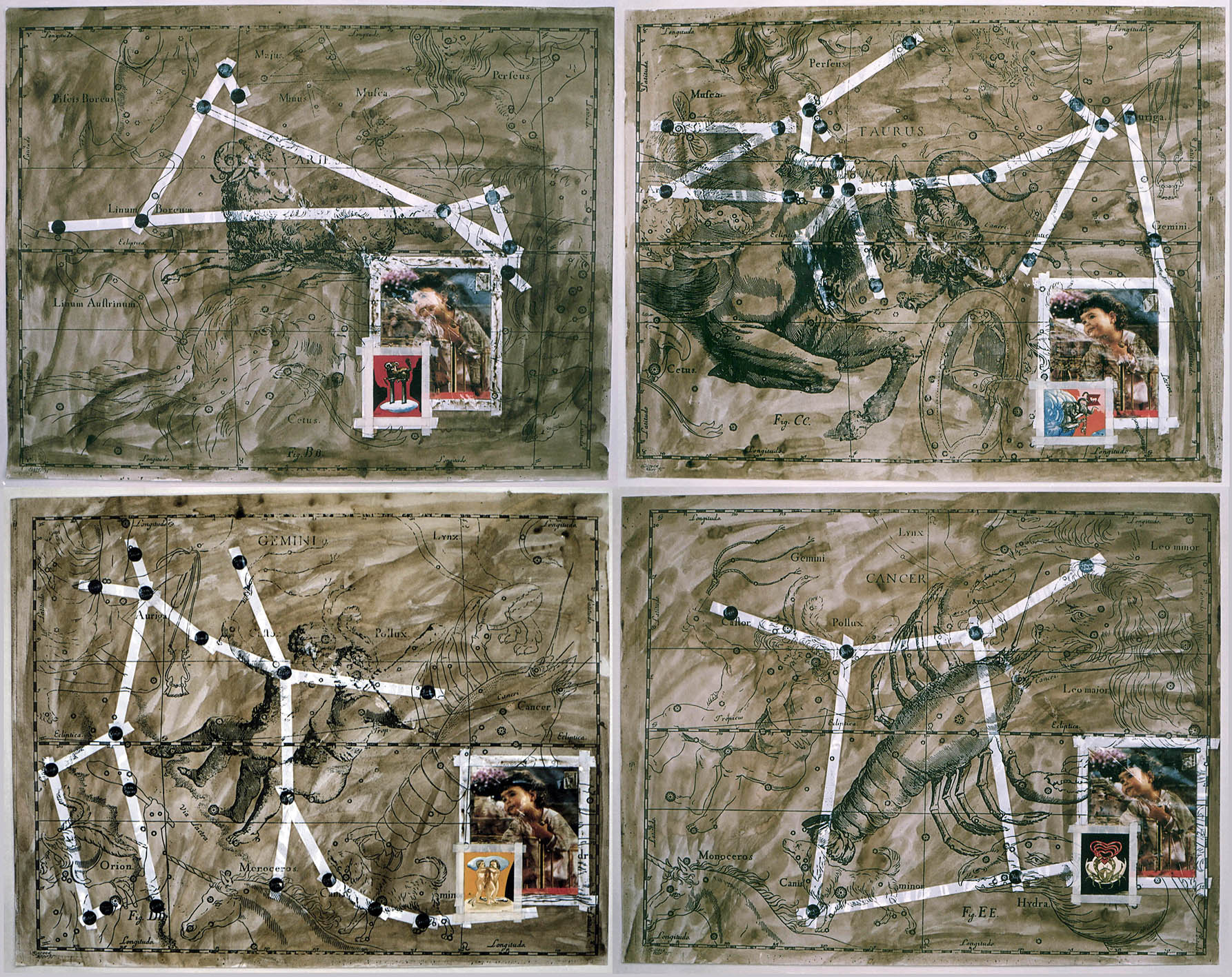 Astrologic, 1995
cycle of 12 drawings
Astrologic, 1995
cycle of 12 drawings
sepia ink, scotch tape, watercolor, Xerox, etc. on paper
each one 70 x 90 cm During the formative years of the Sofia art scene in the early 1990s, the work is interpreting the “constellation” of leading contemporary artists in Bulgaria from the time as if they are actual stars (in the skies) by grouping them in a work according to their astrological sign. All drawings can be viewed here -
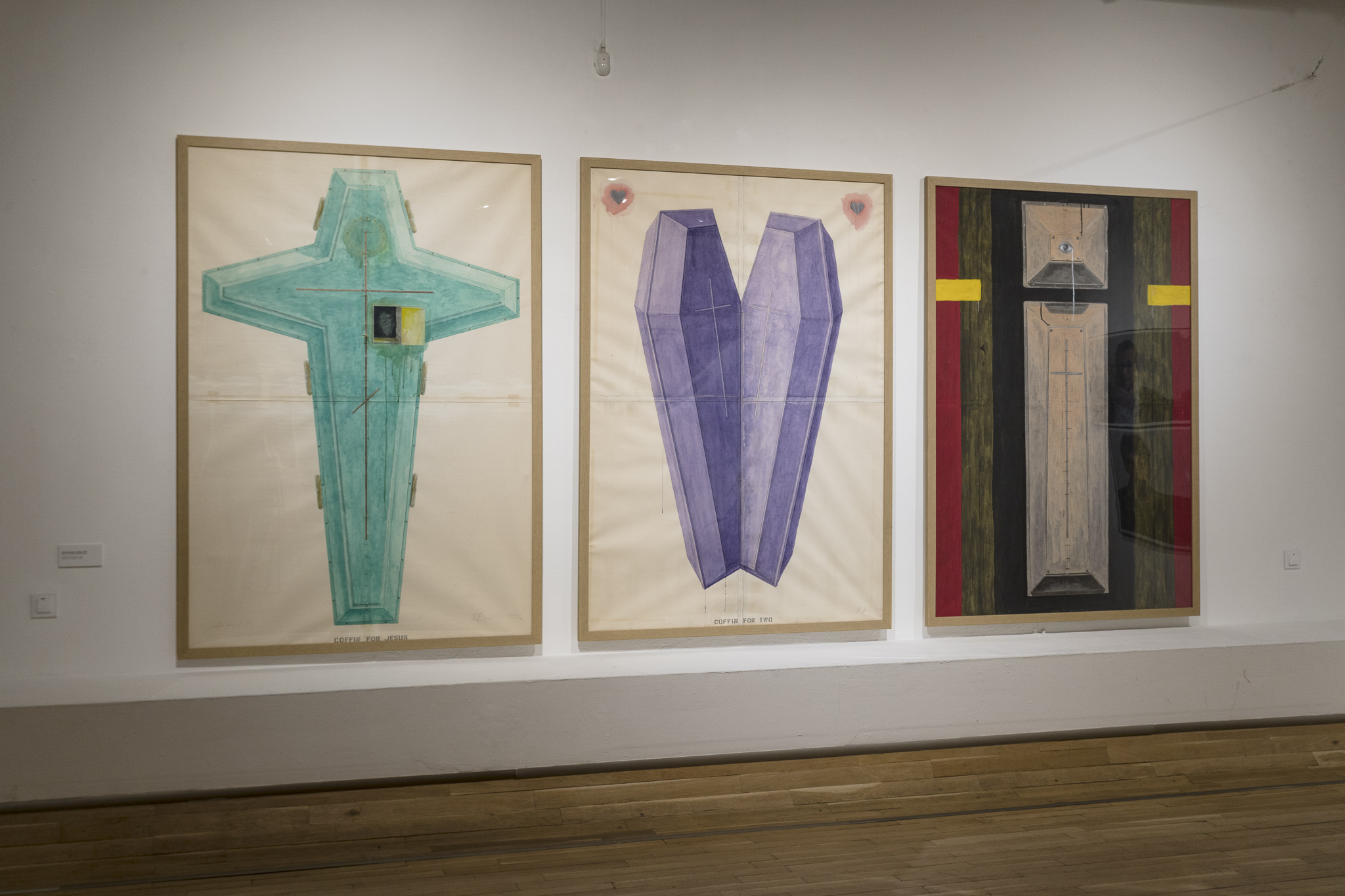 Existential Cemetery, 1992
Cycle of 3 drawings on paper
Existential Cemetery, 1992
Cycle of 3 drawings on paper
pencil, tempera and watercolor, collage
200 x 140 cm each At the end of the tumultuous year of 1992 in the life of the author – full of professional success and personal drama, the artist created 3 drawings of coffins: a/ a coffin for the Ego – shaped like the English letter “I” with head separated from the body; b/ a coffin for Two People who die in their love; and c/ a coffin for Jesus – as a symbolic gesture of liberating himself from the 3 main existential items for each human being – the self, the other and the transcendental. -
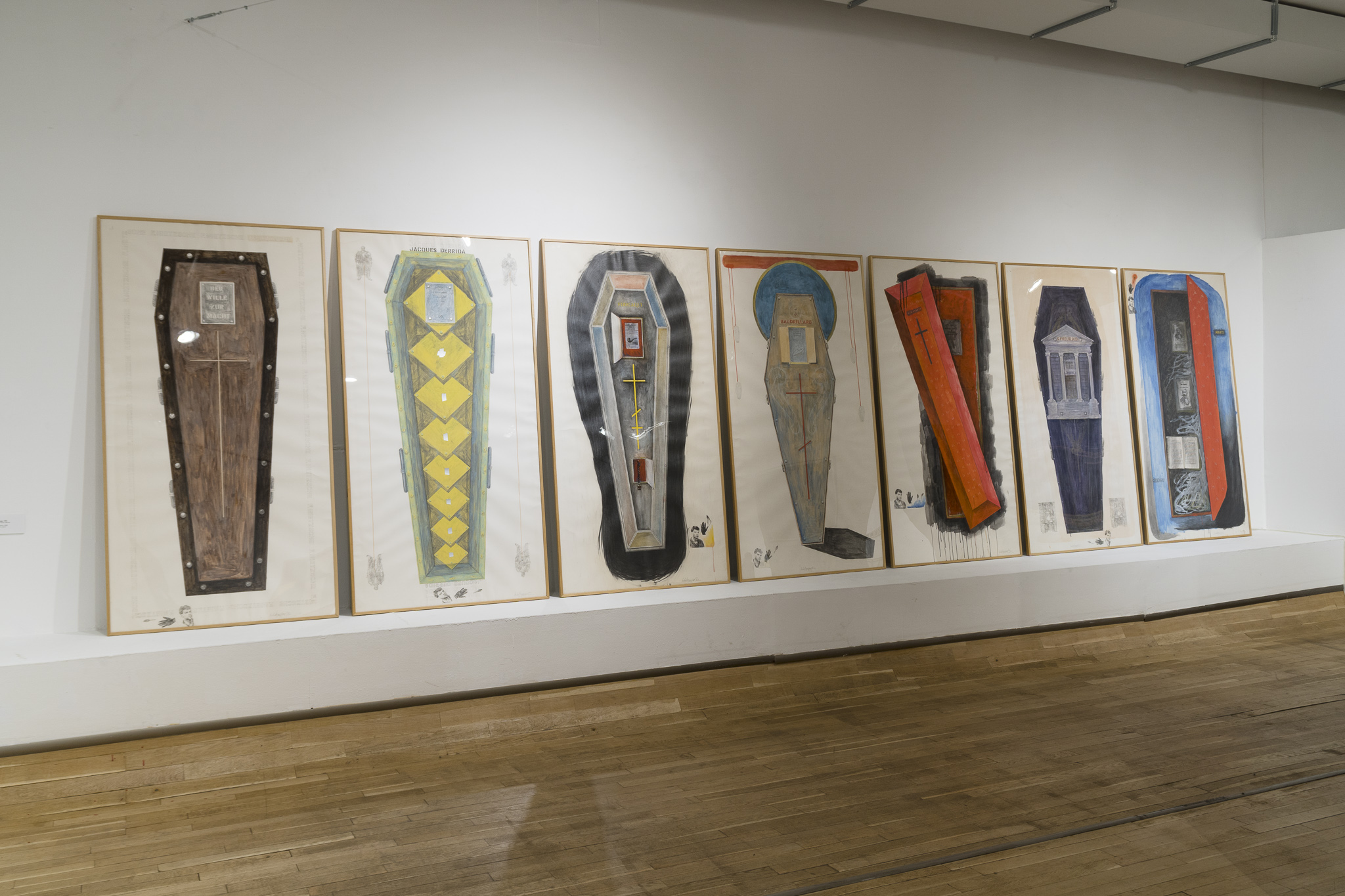 Philosophical Cemetery, 1992
cycle of 7 drawings on paper
Philosophical Cemetery, 1992
cycle of 7 drawings on paper
pencil, tempera and watercolor, collage
167 x 87 cm each In the aftermath of the fall of the Berlin Wall in 1989, the artist decided to get rid of the strong ideologies of the 20th c. that had defined the world to such disastrous results of war and human tragedy. He also made drawing to symbolically liberate himself from theory and start all over again, as well as to “bury” in this way books by (on the photograph, from left to right) Nietzsche, Derrida, Foucault, Baudrillard, Lenin, Freud, and Marx. Drawings available (on the photograph, from left to right): Nietzsche, Foucault, Baudrillard, Lenin, and Freud. Drawings can be viewed here -
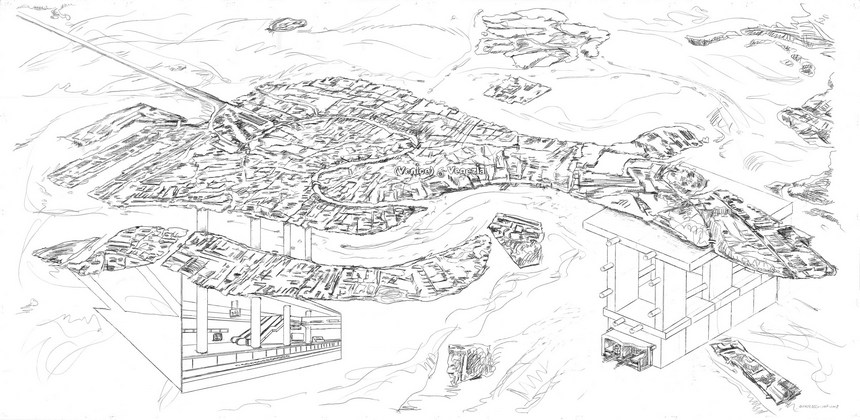 Venice needs an underground (a metro)!, 2007-2018
drawing
Venice needs an underground (a metro)!, 2007-2018
drawing
pencil on paper
101 x 203 cm (framed) -
 Kassel needs an airport!, 2007-2018
drawing
Kassel needs an airport!, 2007-2018
drawing
pencil on paper
101 x 203 cm (framed) -
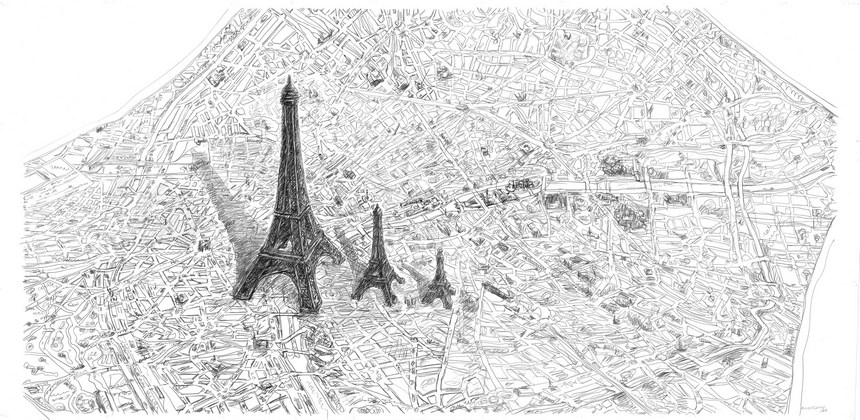 Paris needs to reboot!, 2004-2018
drawing
Paris needs to reboot!, 2004-2018
drawing
pencil on paper
101 x 203 cm (framed) -
 Jerusalem needs to hover!, 2008-2018
drawing
Jerusalem needs to hover!, 2008-2018
drawing
pencil on paper
101 x 203 cm (framed)
Collage
Photography
-
 How many nails in a mouth? Self-portrait with 2 kg of 12.5 cm long nails in the mouth, 1992-1995
Homage to Günther Uecker Passport photographs in a block of 4
How many nails in a mouth? Self-portrait with 2 kg of 12.5 cm long nails in the mouth, 1992-1995
Homage to Günther Uecker Passport photographs in a block of 4
13 x 9 cm
Edition 3/1 AP
Courtesy SARIEV Contemporary Based on the idea that a truer self-portrait is made if the artist finds the Other in the Self, this image represents and attempt at self-exploration. The “How many nails in a mouth?” work started as a pencil-on-paper drawing expressing inner turmoil and anguish related to a deep family crisis. The initial drawing was made in the summer of 1992 on the terrace in front of the Albertina Museum in Vienna. Later on it evolved into a photographic work subtitled “Homage to Günther Uecker” – as a part of a cycle of homage(s) first shown at “Orient/ation”, the 4th Istanbul Biennial, curated by René Block in 1995. The photographic image was made in a passport photo booth in the center of Sofia in October 1995. The “model” could hold the bunch of nails in his mouth for less than 2 sec due to the very heavy strain on the lower jaw muscles. There were 2 versions/negatives made – a straight up frontal face image and a ¾ side view as in a passport photograph, seen here. -
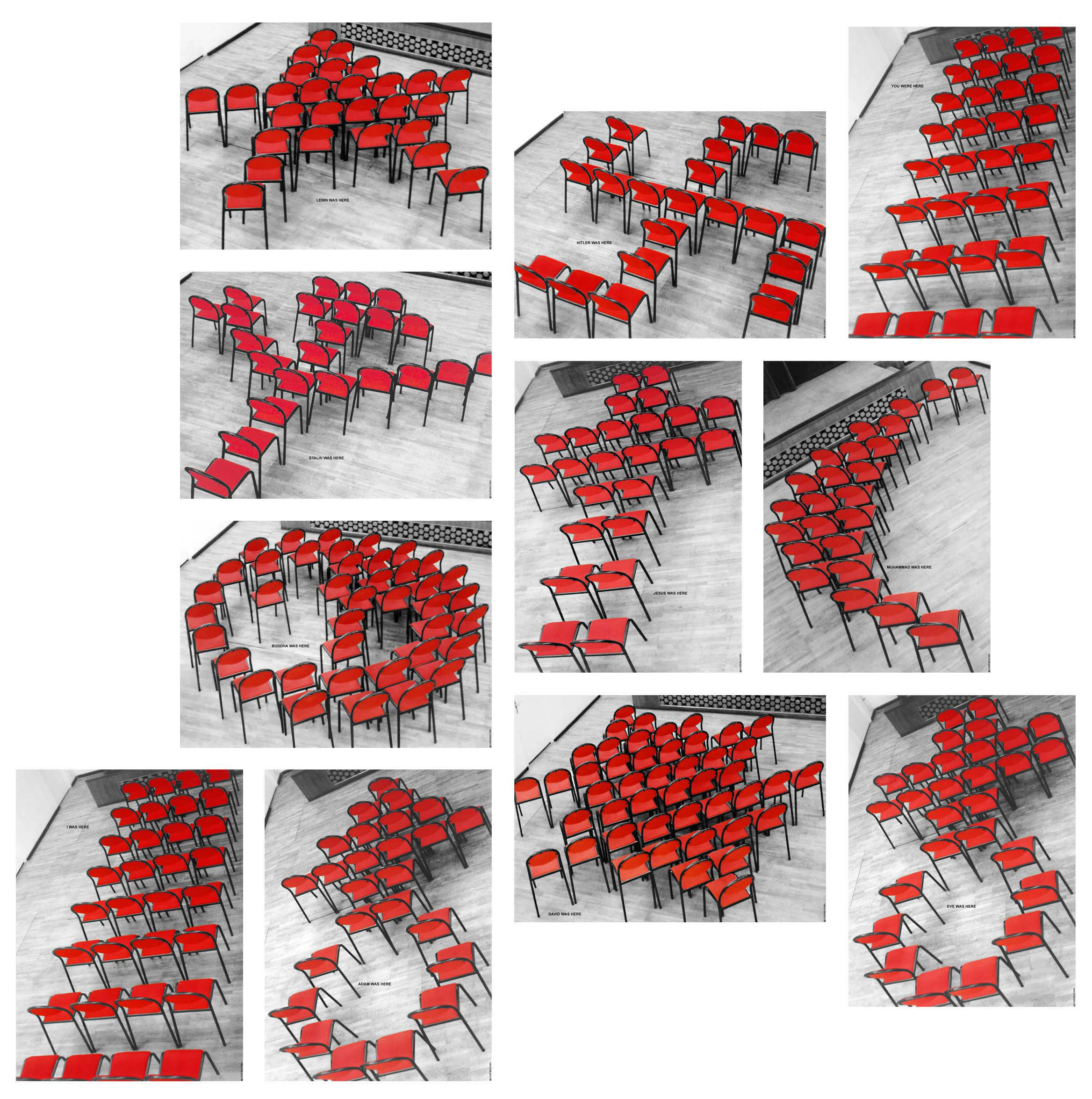 Chairs and Symbols. A project for peaceful co-identification, 1995-2001
cycle of 11 digital prints on paper
Chairs and Symbols. A project for peaceful co-identification, 1995-2001
cycle of 11 digital prints on paper
each one 56.5 х 78 or 78 х 56.5 cm
edition 2+2AP The work references the notion of peaceful co-existence from the time of the Cold War. However, here the idea is to have a peaceful co-identification – we are all responsible for what happens on the world as we are all here and now together, like it or not; instead of “stepping into somebody else’s shoes the work urges identification-by-sitting into somebody else’s symbol. The symbols that divide people – from the male-female duo, to the religious and totalitarian symbols might also serve as a reminder that we are or have been or will be in this world together, for good and bad. All prints can be viewed here -
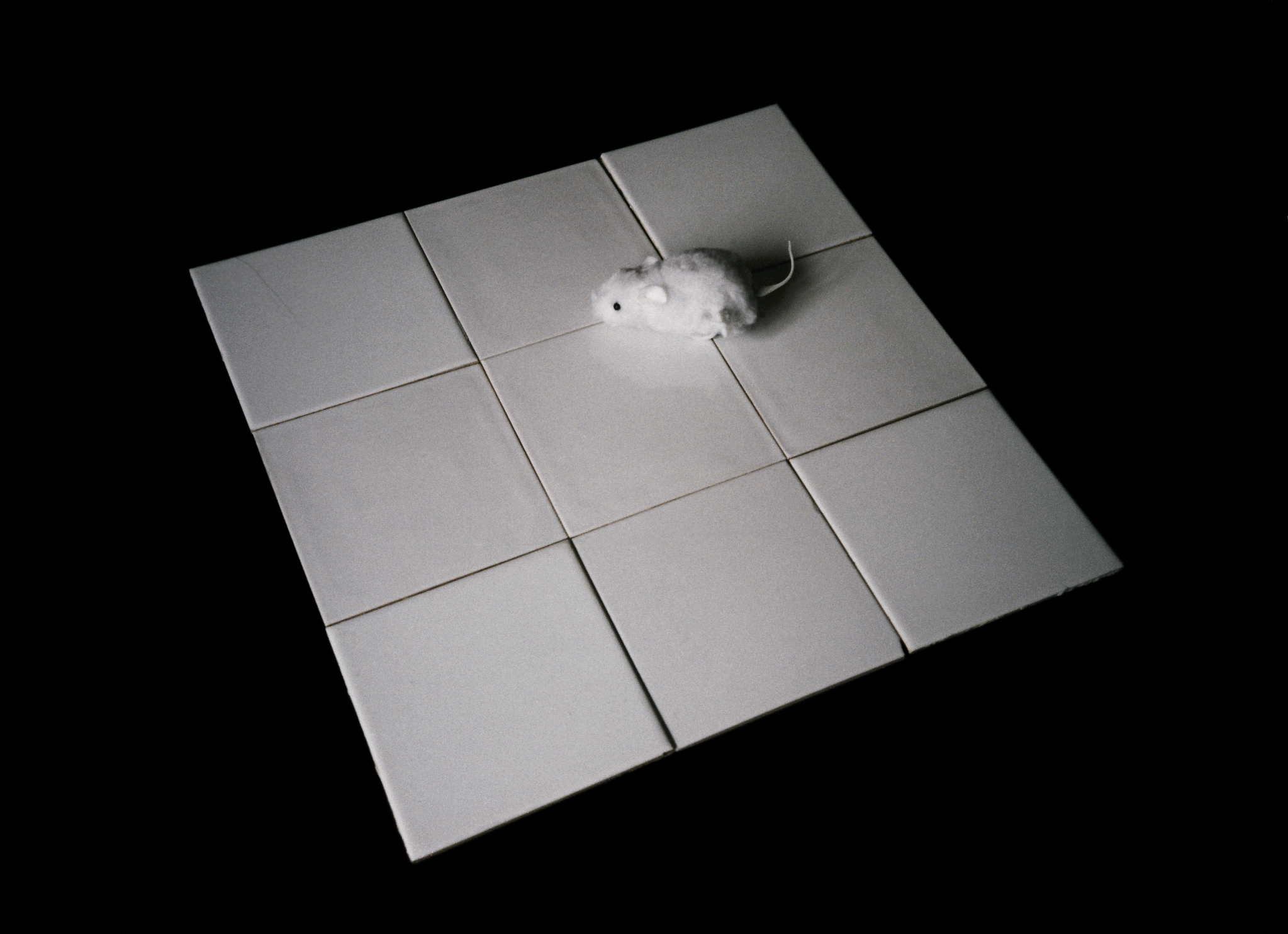 White mouse on white background (Homage to Kasimir Malevich), 1995
Color photograph
White mouse on white background (Homage to Kasimir Malevich), 1995
Color photograph
12.6 x 17.5 cm
edition 20/5 AP Playing with the notion of modernism and the early avant-garde as an experimental and alternative way of “making art”, the work references the white, tiled laboratory and the test animals there. The references go on with Malevich use of White Square on white background, the cross and the square as preferred forms of Suprematism. The “Homage to Kasimir Malevich” was first shown at “Orient/ation”, the 4th Istanbul Biennial curated by René Block in 1995. -
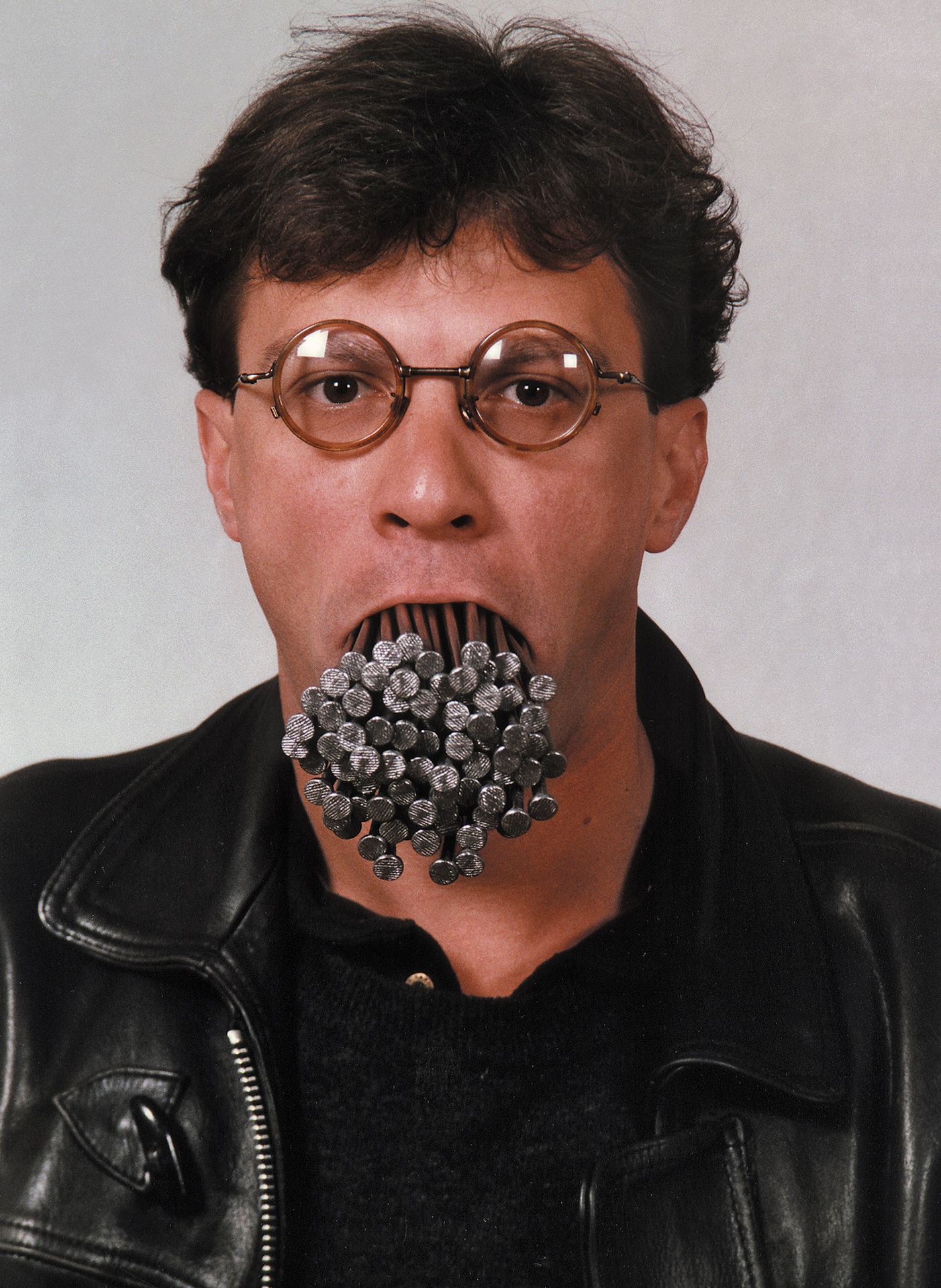 How many nails in the mouth? Self-portrait with 2 kg 12.5 cm long nails in the mouth, 1992-1995
digital print on paper
How many nails in the mouth? Self-portrait with 2 kg 12.5 cm long nails in the mouth, 1992-1995
digital print on paper
80 x 60 cm
edition 3+2AP The “How many nails in a mouth?” work started as an inner turmoil expressing pencil-on-paper drawing made on the terrace in front of the Albertina Museum in Vienna in summer of 1992. Later on it evolved into “Homage to Günther Uecker”, part of cycle of homage(s) first shown at “Orient/ation”, the 4th Istanbul Biennial curated by René Block in 1995. -
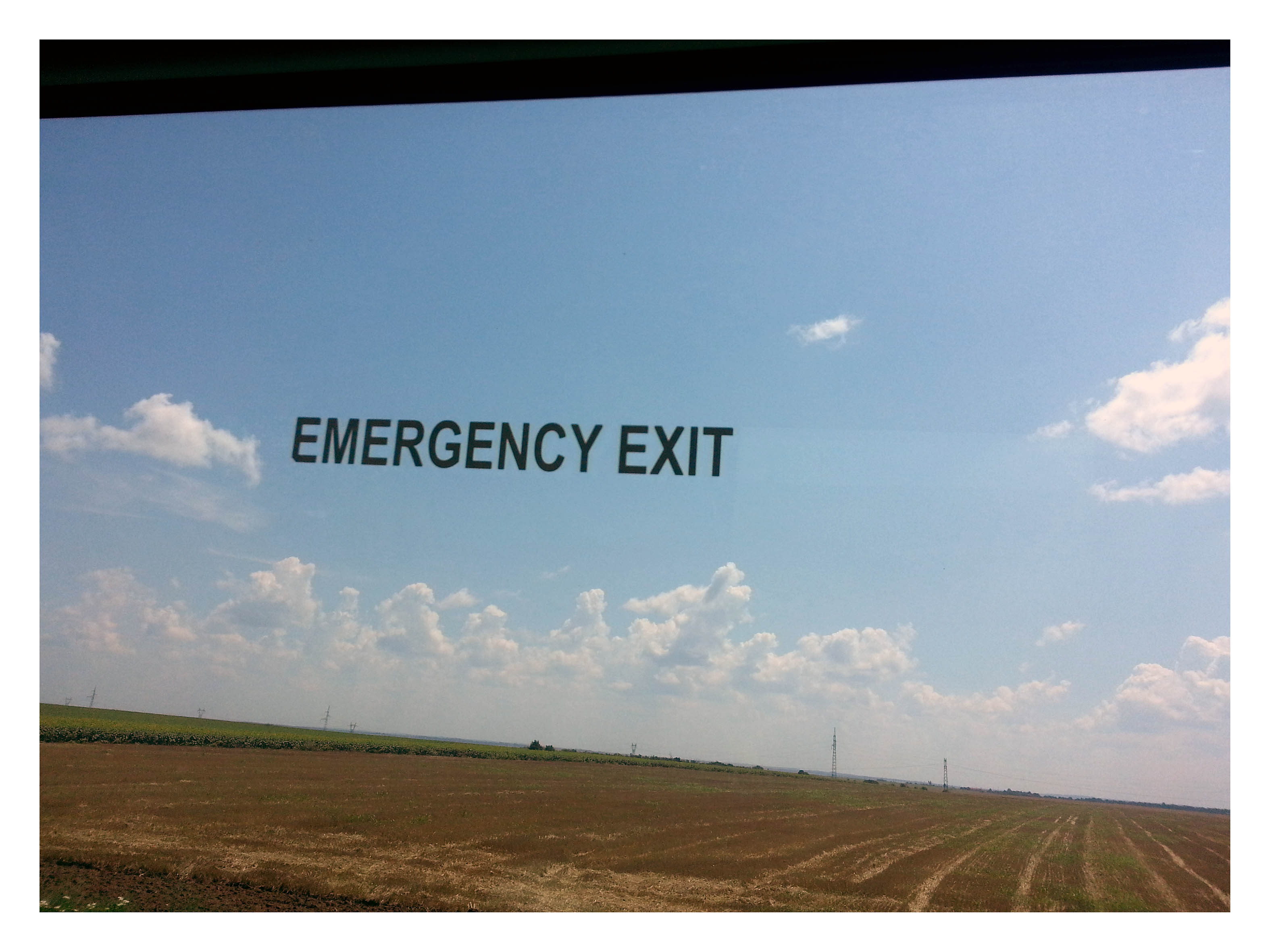 Emergency Exit, 2013
photograph
Emergency Exit, 2013
photograph
digital print on paper
60 x 80 cm
edition 5+2AP -
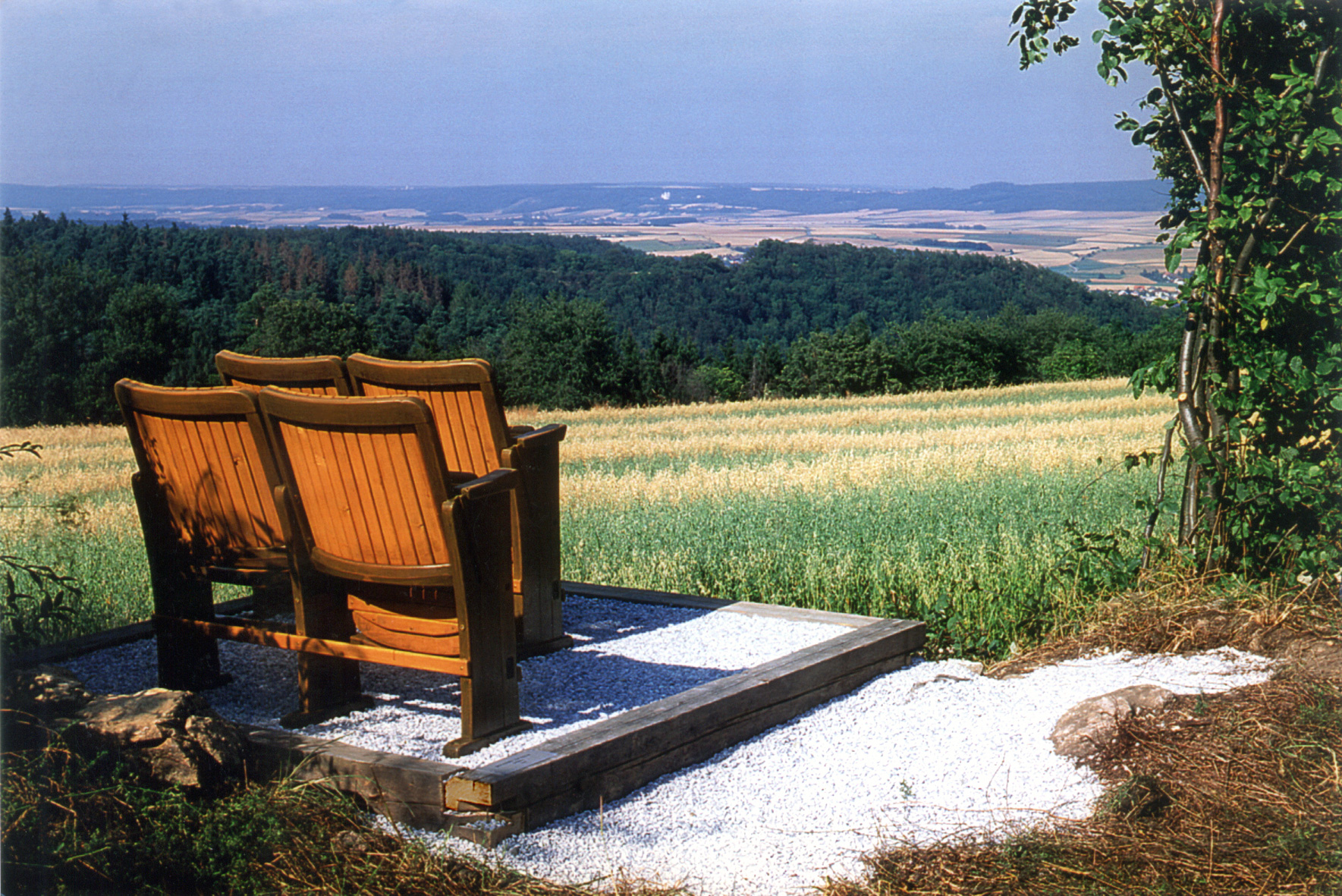 Gazebo, 1996 (2018)
author’s reconstruction of a site-specific work in Austria near Gars-am-Kamp
Gazebo, 1996 (2018)
author’s reconstruction of a site-specific work in Austria near Gars-am-Kamp
app. 80 km north-west of Vienna
photo-wallpaper on a wall
app. 330 x 550 cm and variable depending on size of wall
edition 3+2AP In the summer of 1996 I was invited to a sculpture symposium in nature. Not a sculptor, I tried to create a setting to enjoy the beauty of nature while seeing it as if in a cinema. I found 2 pairs of old wooden cinema chairs on the farmyard of the host and repaired them. The line of bush and small trees between two private fields was cut down to create an opening through which a beautiful vista is revealed. I paid 500 Austrian Schilling (app. 50 $) to the owner of the fields for the use of the cleared spot and built a stone platform. The repaired chairs were fixed to the platform to construct a “gazebo”. The site-specific work was kept functional for more than 10 years by the local people. Nowadays I am showing it as a fit-to-wall site-specific photo-wallpaper.
-
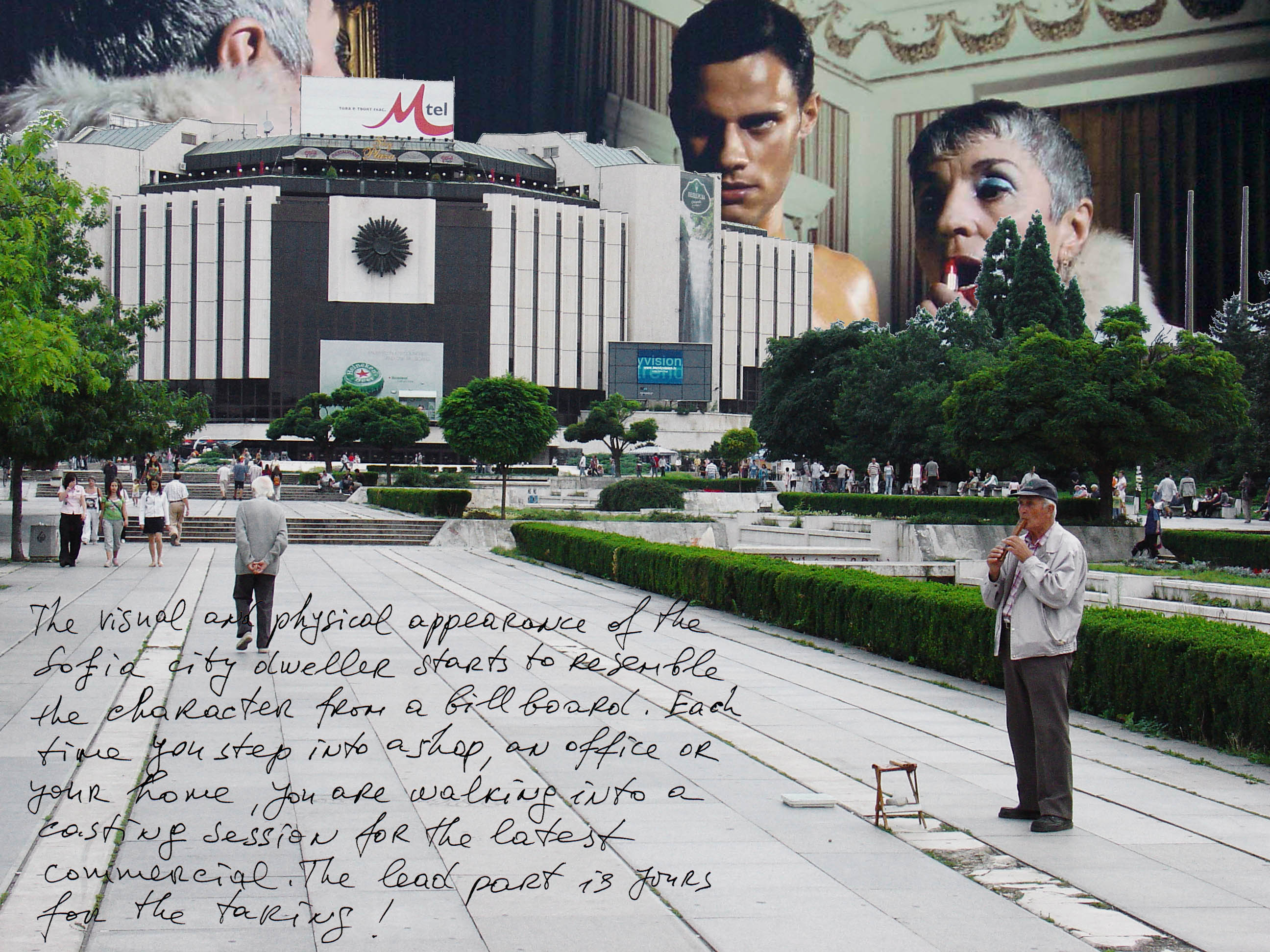 Billboard Heaven, 2005
Cycle of 19 digital prints on paper. Each one 60 x 80 cm. Sofia City Art Gallery Collection
Billboard Heaven, 2005
Cycle of 19 digital prints on paper. Each one 60 x 80 cm. Sofia City Art Gallery Collection
-
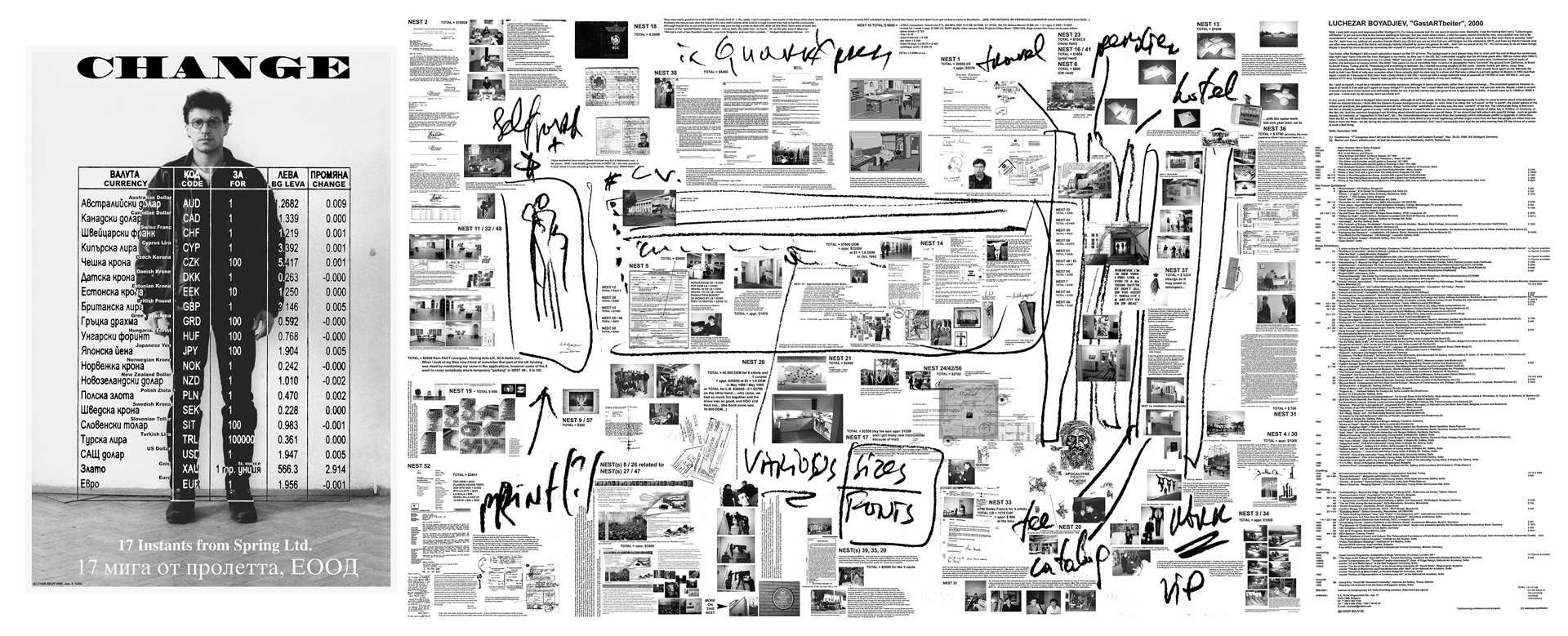 GastARTbeiter, 1998-2000
digital print on vinyl
GastARTbeiter, 1998-2000
digital print on vinyl
210 x 510 cm
edition 5+2AP At the end of the 1990s the artist noticed that his CV is growing fast while his income and ability to support his family was staying close to zero. Any earnings he was able to secure were from working outside of his home country. Any money he brought home from his working trips had to be exchanged immediately for the local currency. He wanted to know who is paying for his career, and later on – to meet them - the taxpayers-turned-visitors to the shows he was part of. He was aware that he is part of a kind of symbolic exchange and wanted to explore in more detail the situation. The work is a calculation of how much money was spent for the artist’s career between 1991 and early 2000, excluding sales of art works. The work consists of “data nests” where scanned documentation, receipts, photos from social occasions and installations are grouped together with textual explanation and notes concerning each show, conference or residency. The print is a kind of a mini-retrospective of the artist.
